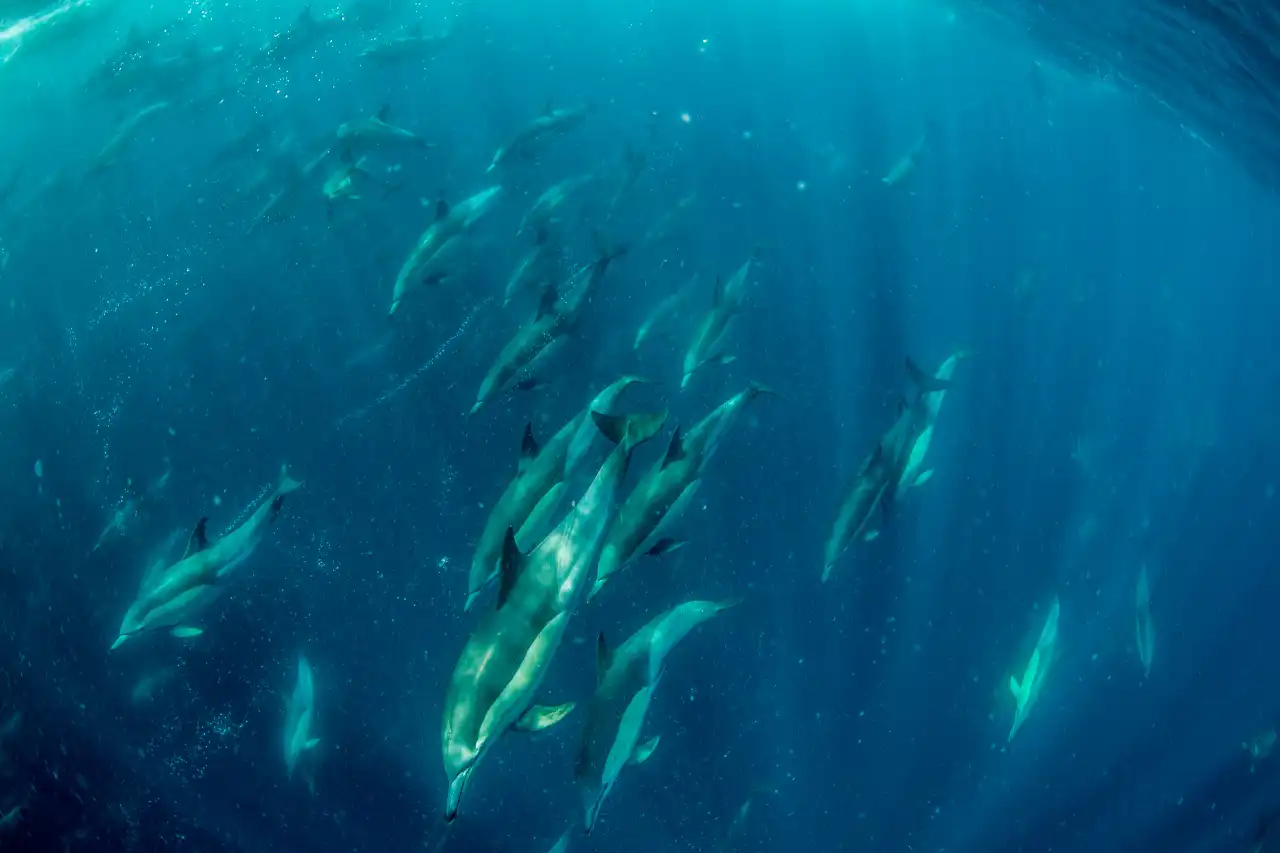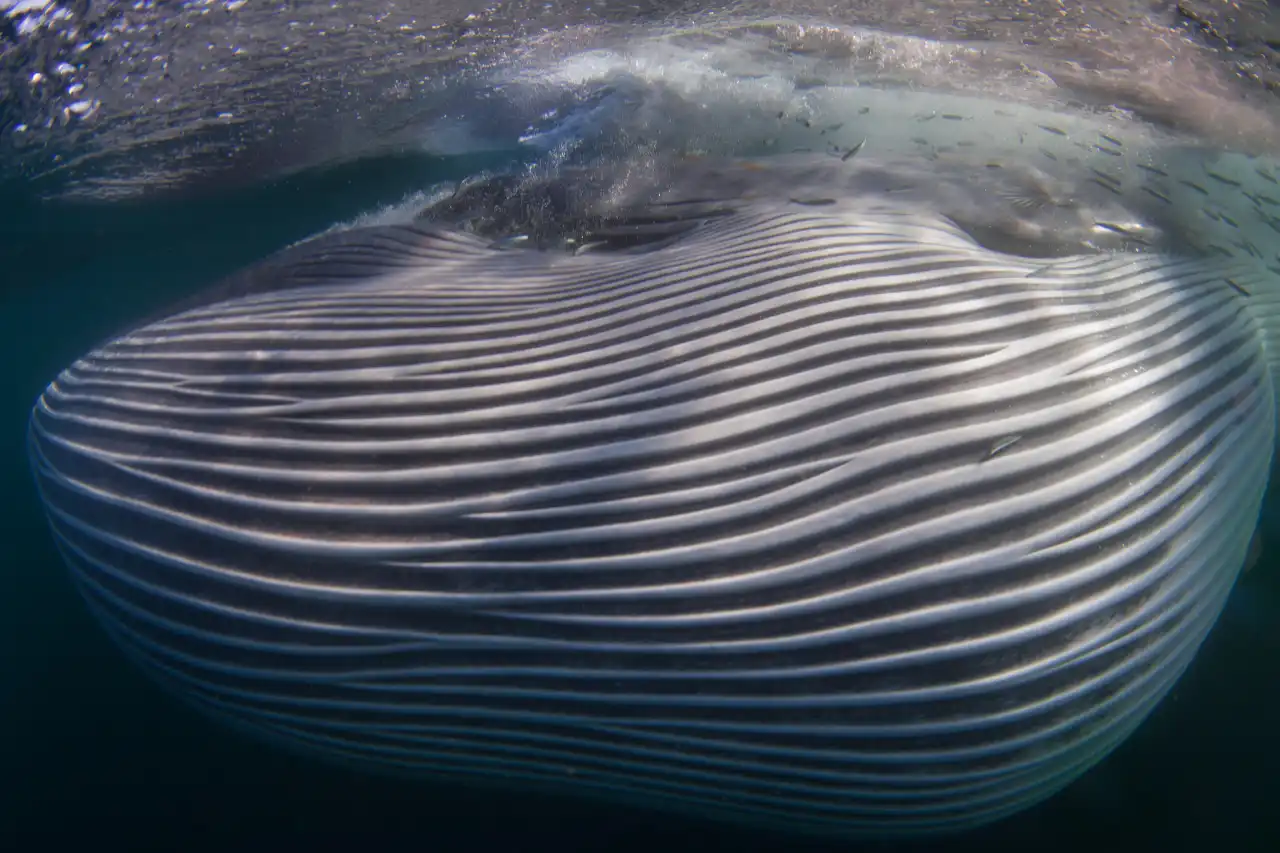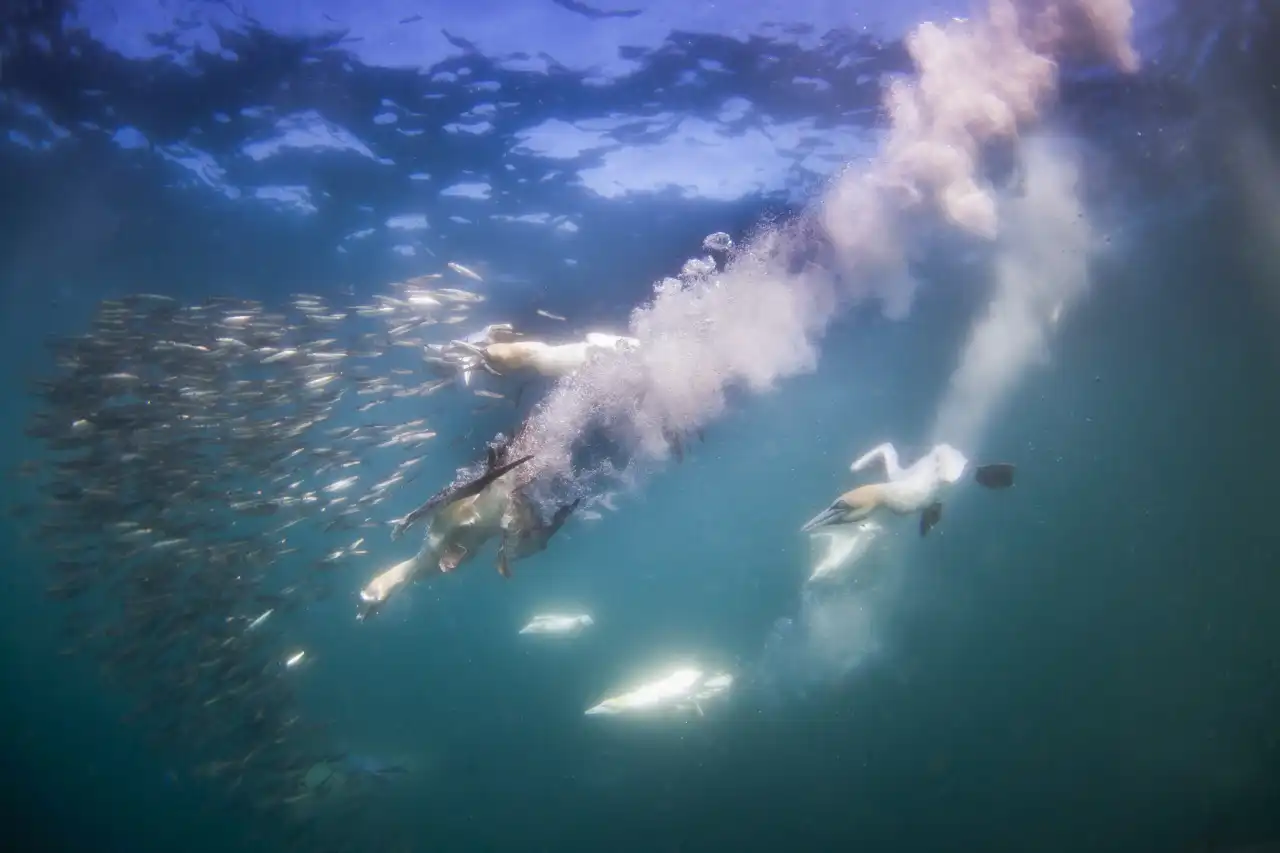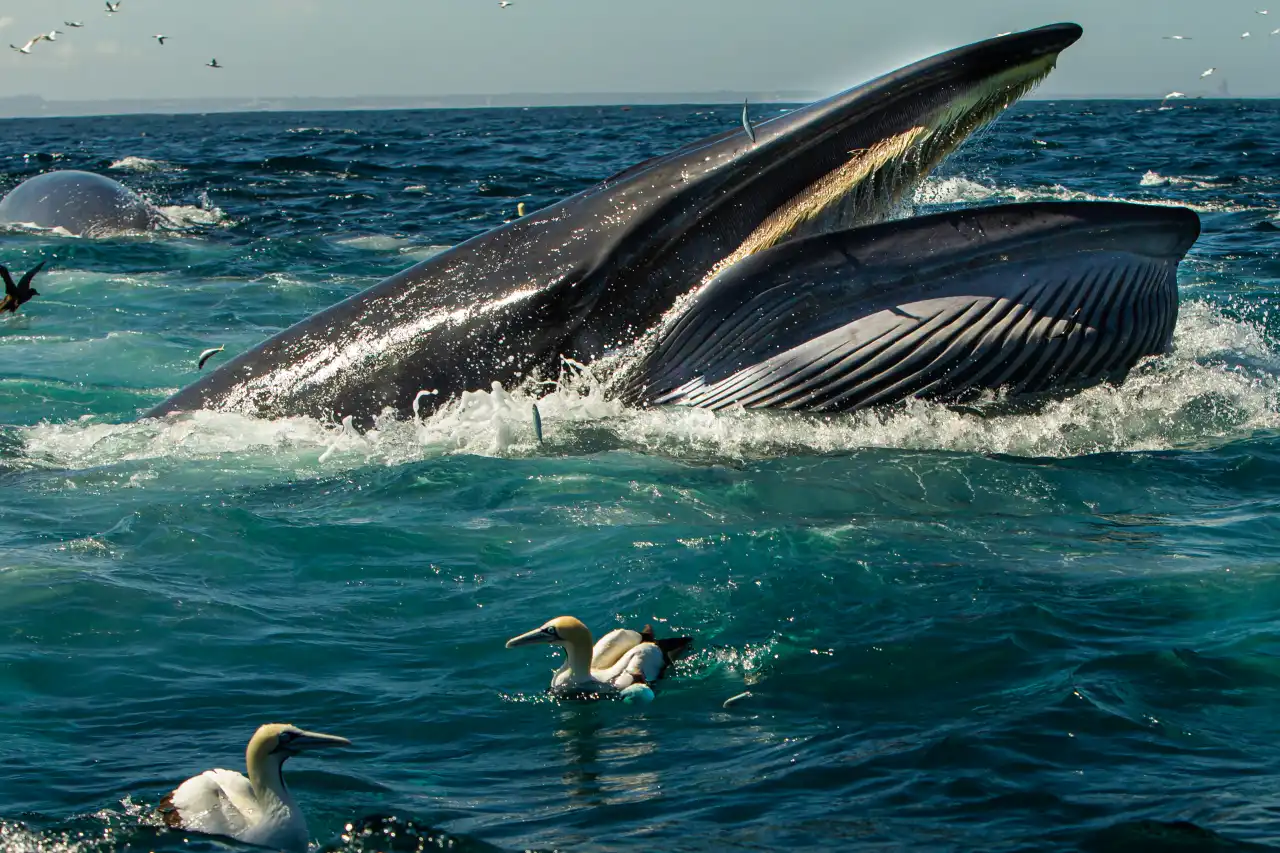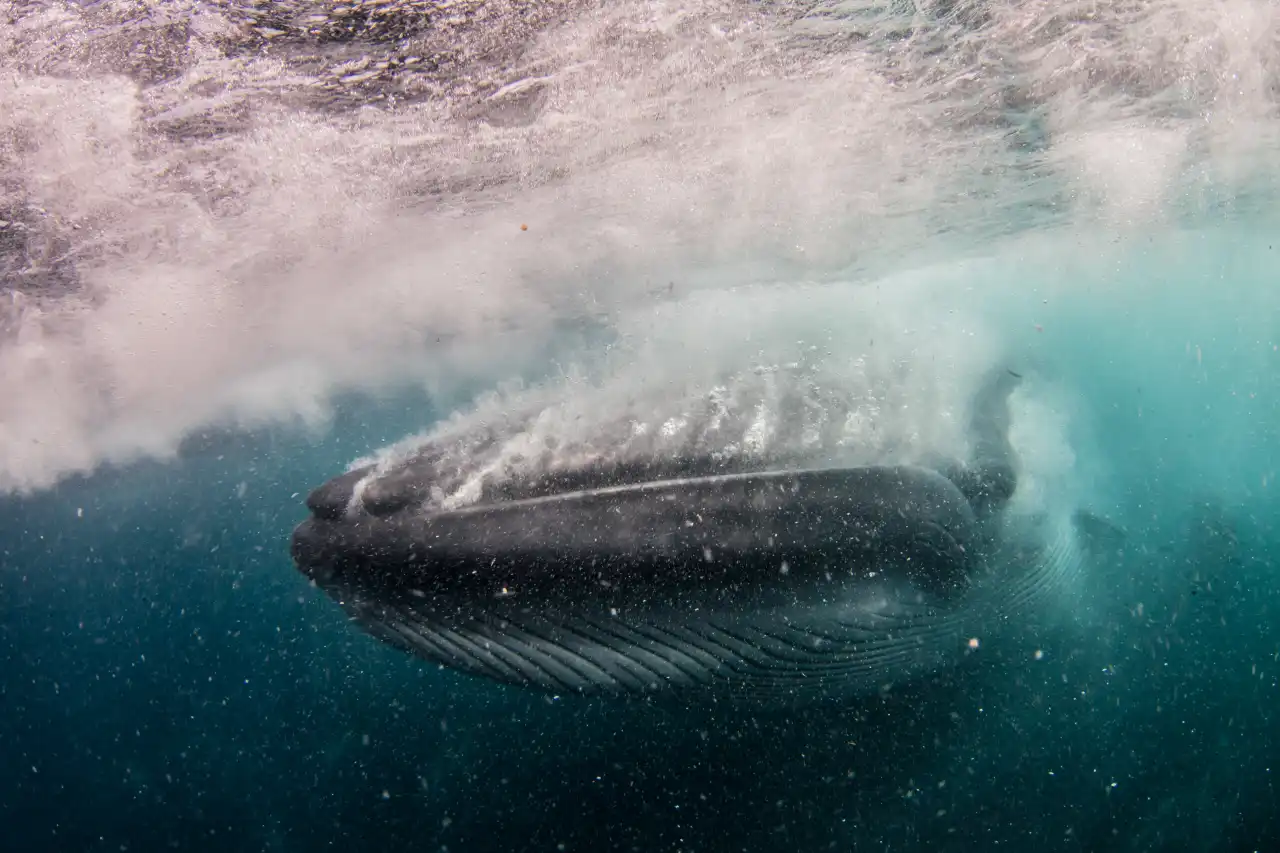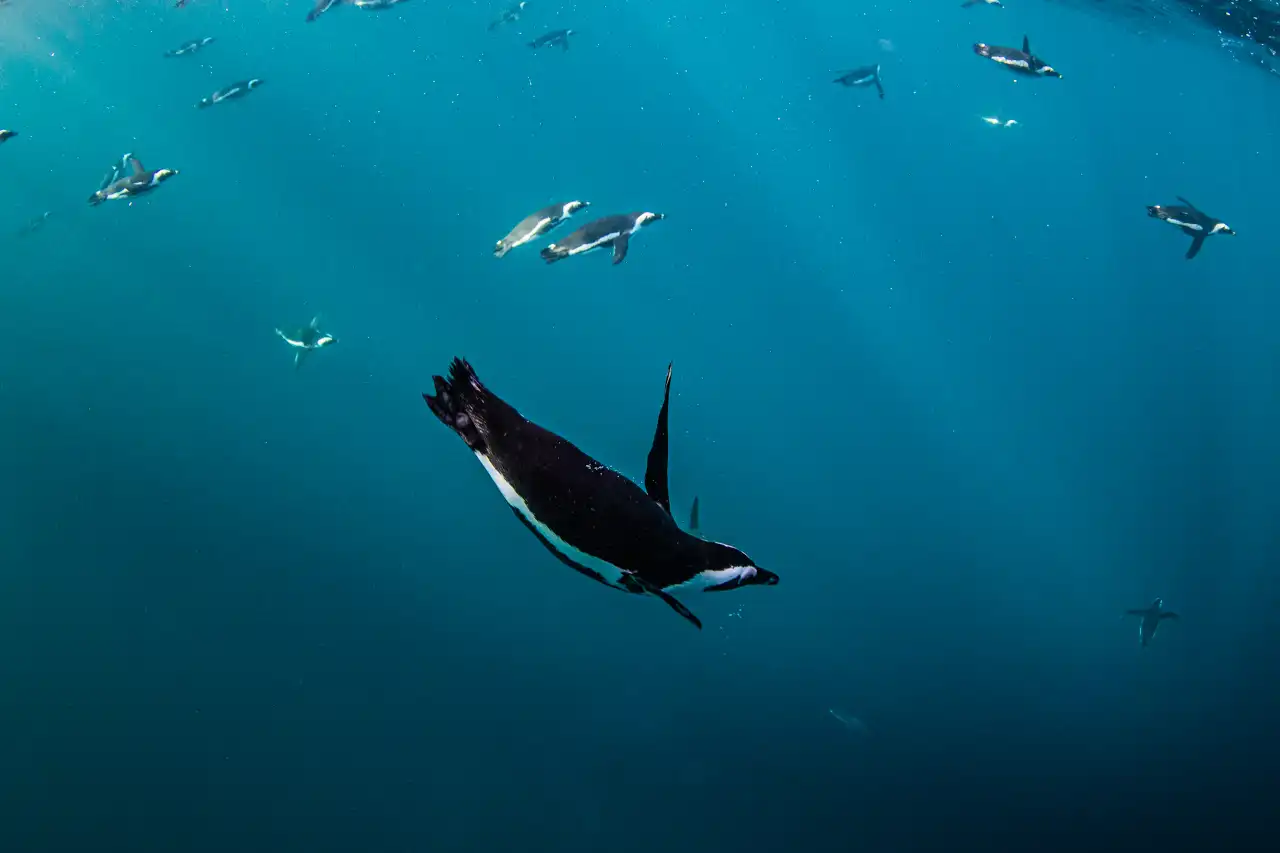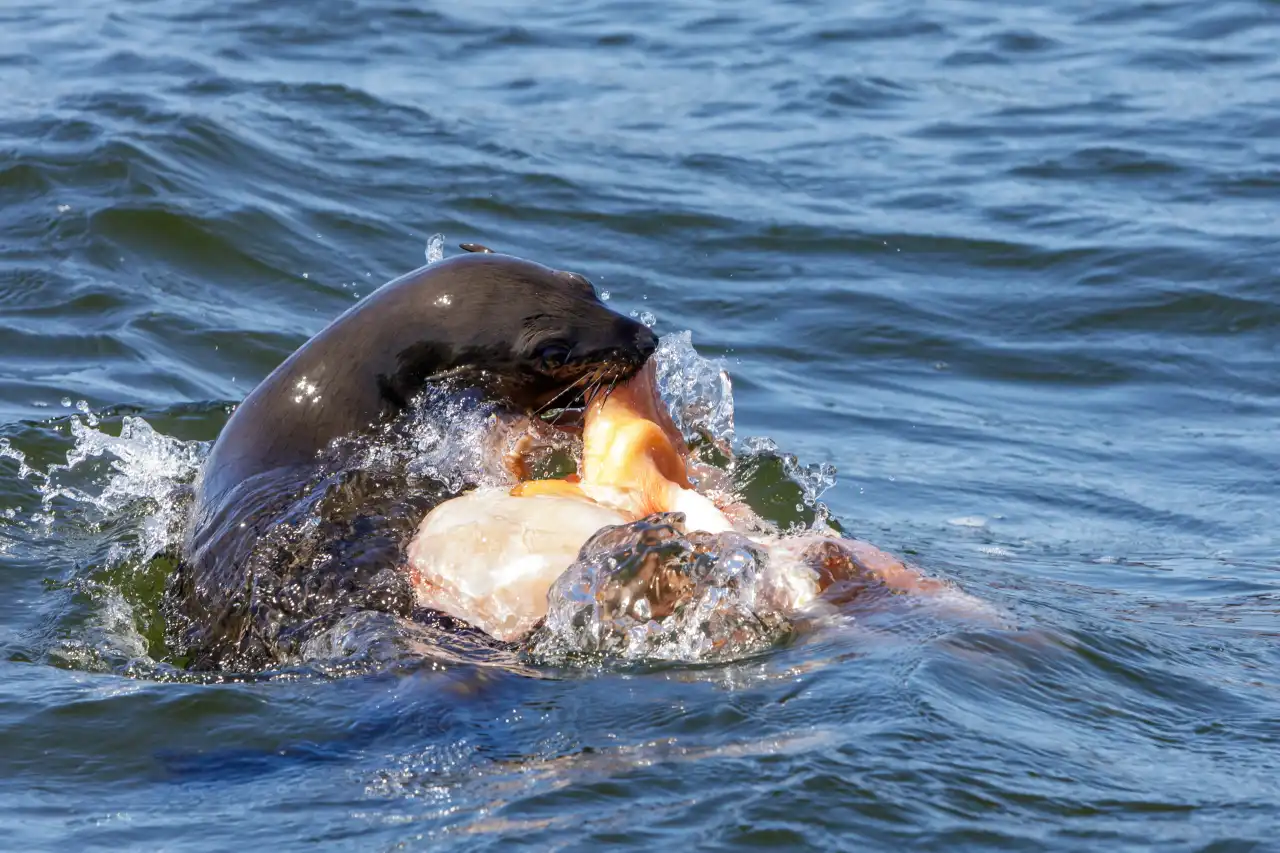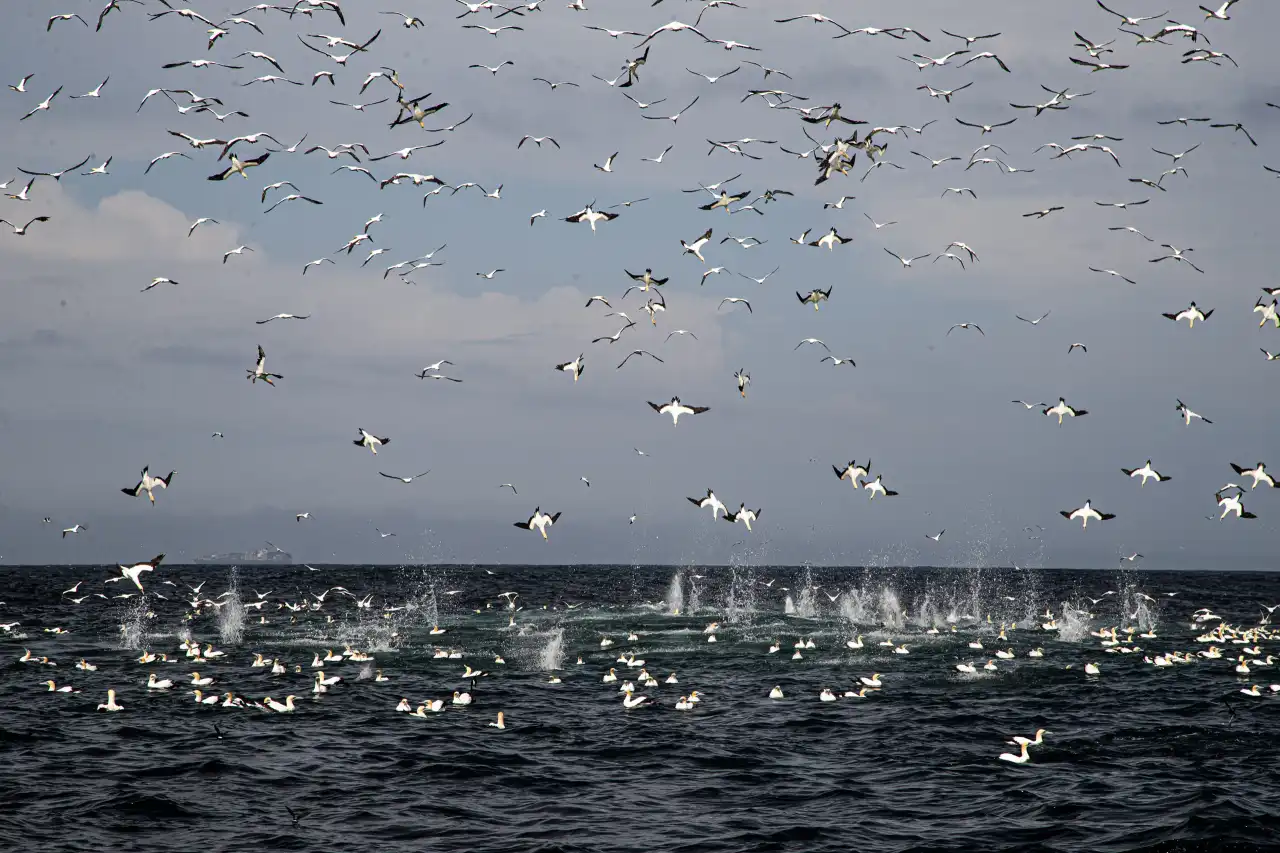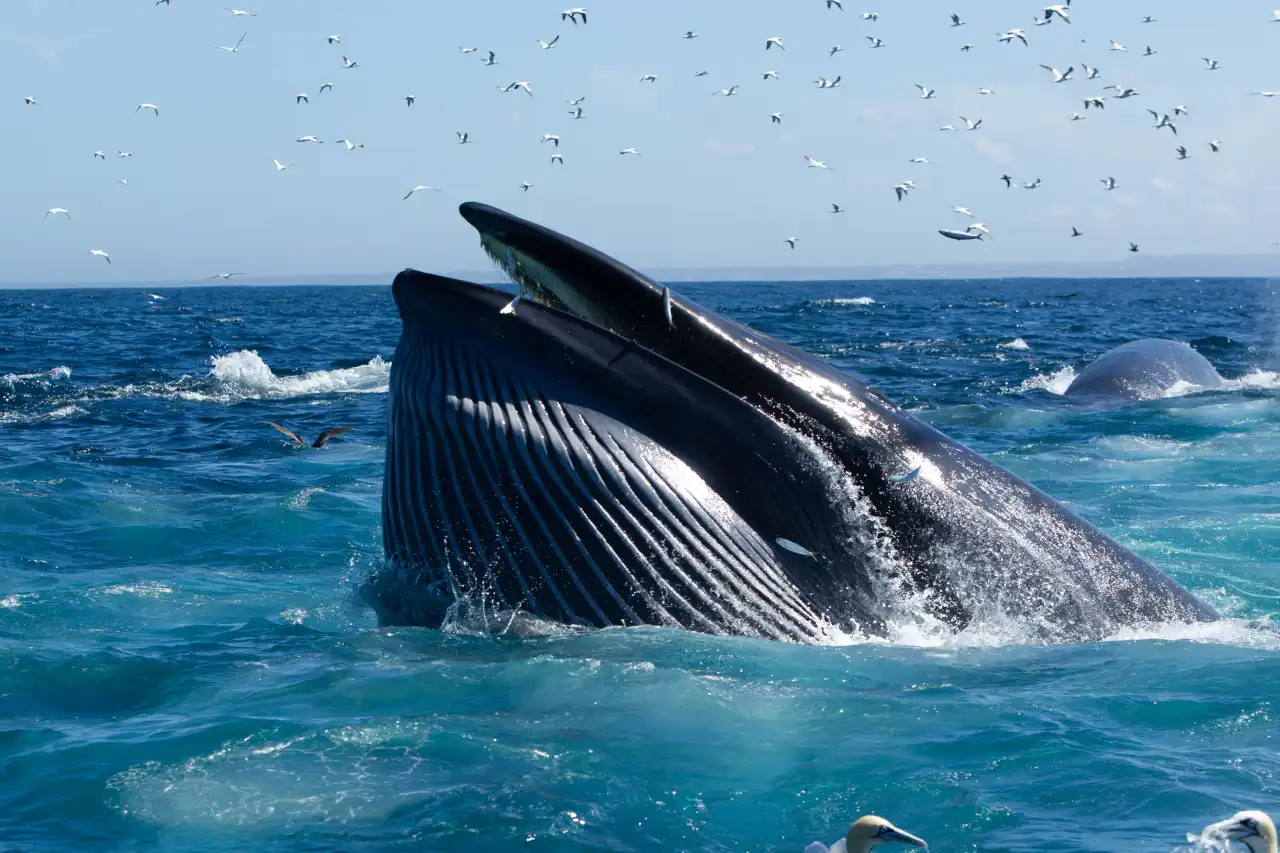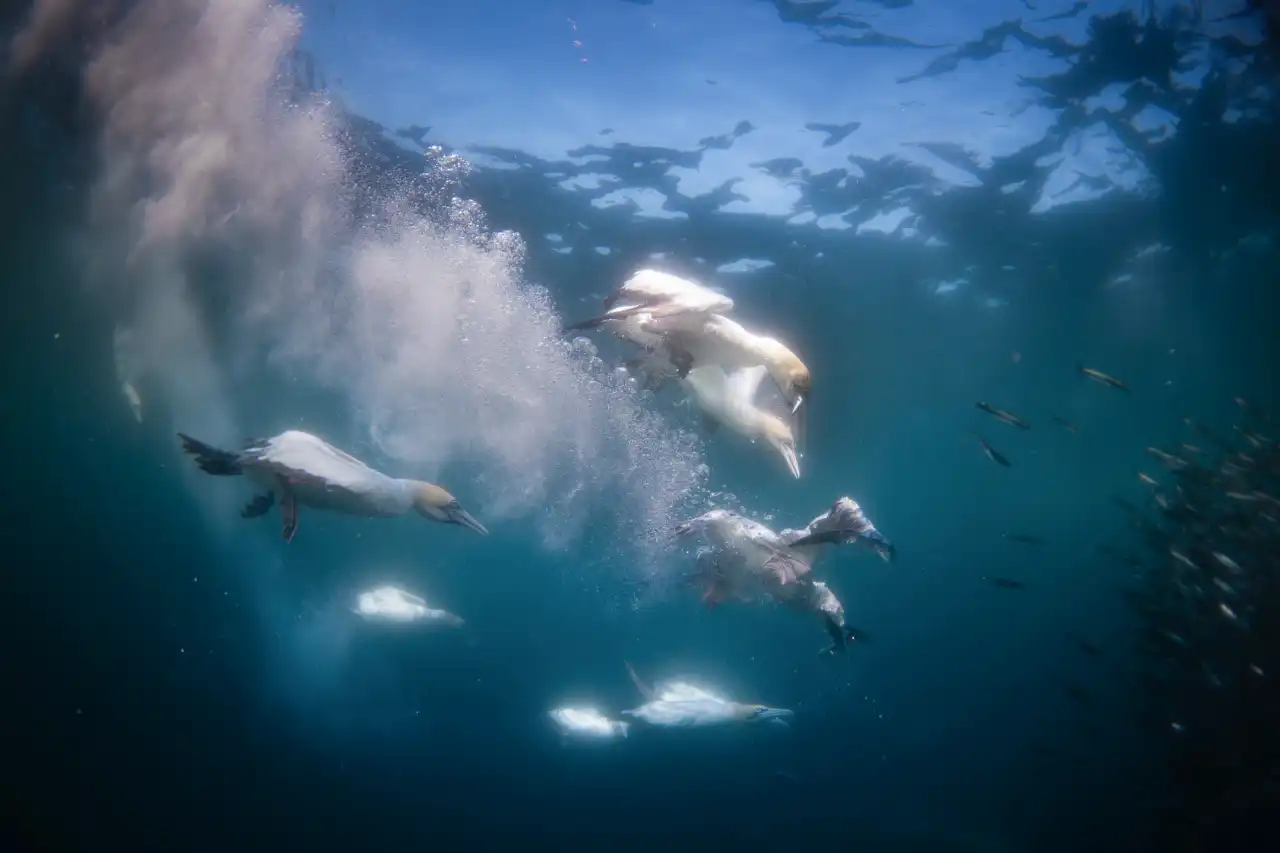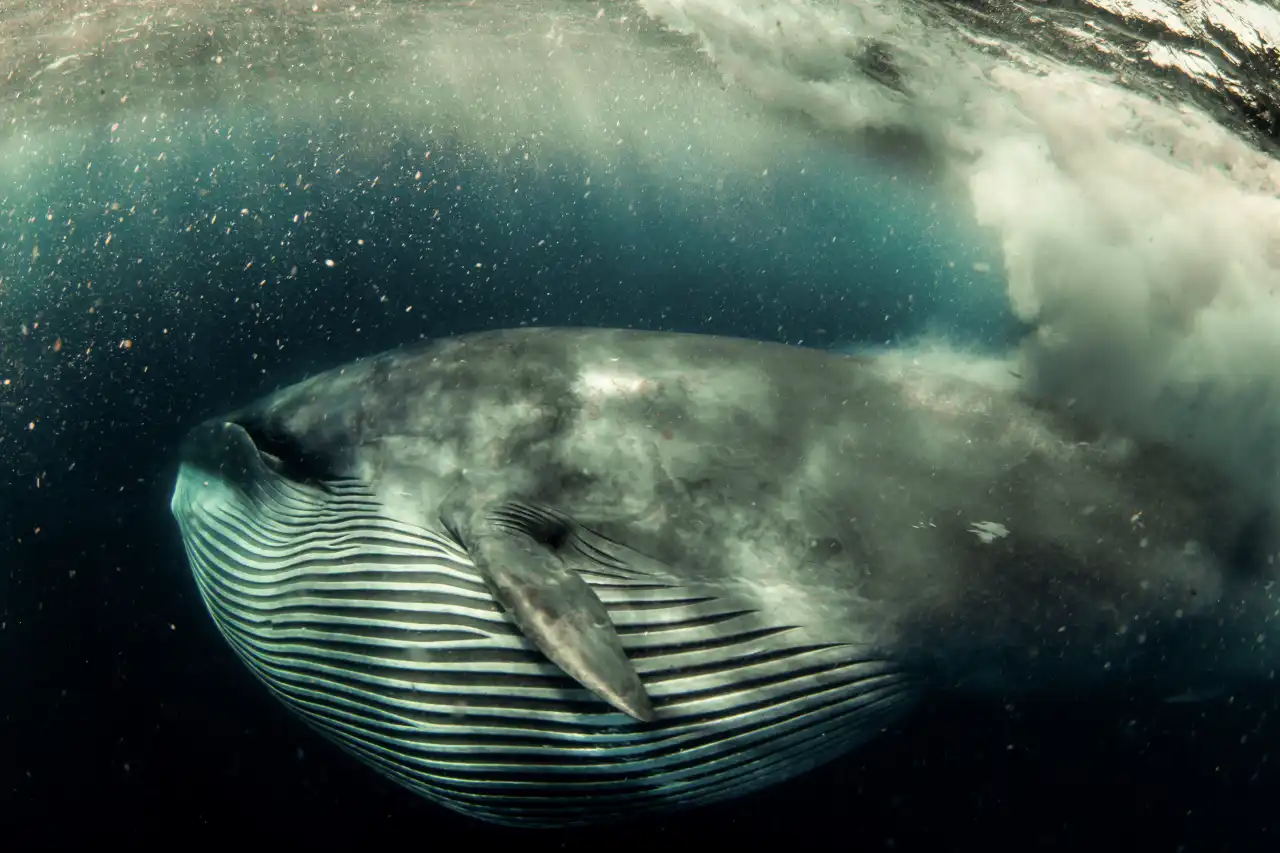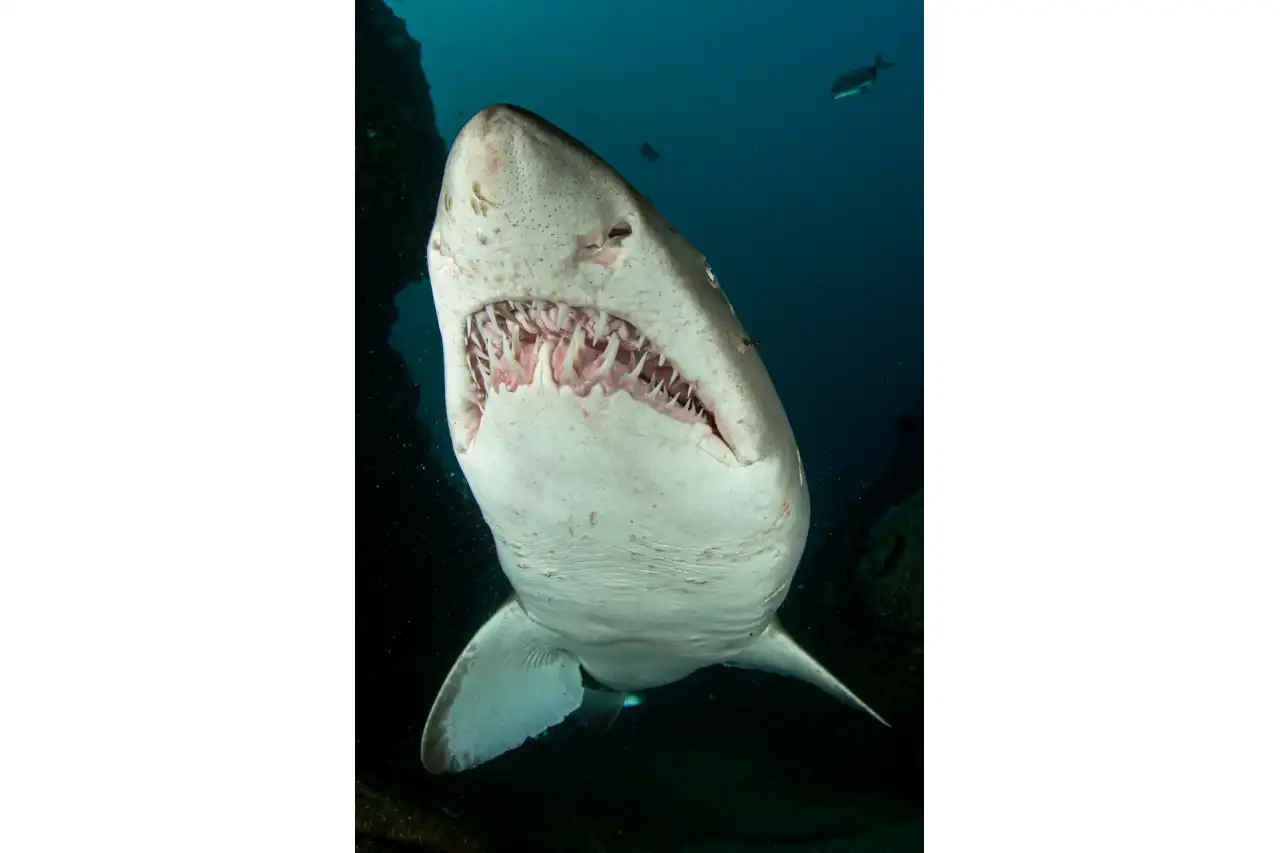The original: Sardine Run East Coast, South Africa
The Sardine Run in South Africa is the largest fish migration in the Southern hemisphere!
We will take you into the heart of the action. Depending on period and weather from Port Elizabeth in the Eastern Cape to as far north as Durban in KwaZulu Natal, predators such as whales, dolphins, fur seals, penguins, sharks and Cape Gannets (seabirds) congregate in large numbers to hunt for the schooling fish, made up mainly of Redeyes, Sardines and Anchovies.
Expert-Tours has been organizing Sardine Run tours in South Africa for over 23 years and boasts a flawless safety record.
We welcome the opportunity to introduce you to this “once in a lifetime” event!
All images/ video recordings are copyrighted and are produced with the permission of the local authorities and with the necessary permits.
Impressionen
Tour packages
Optional at extra charge
Not included
Tour dates 2025
- 12. till 22. February 2025
- 24. March till 03. April 2025
- 05. till 15. April 2025
- More dates in Mai and June on request.
3950,00 EUR
Booking enquiry
The Sardine Run with Expert-Tours
From February to July every year, millions of sardines migrate along the Indian Ocean coastline, from Port St Francis in the Eastern Cape to as far north as KwaZulu Natal. This tour is sure to get your adrenaline pumping, where you will witness and be part of massive sardine bait balls being attacked from all sides by dolphins, sharks, whales and gannets.
Depending on the travel dates chosen, you will either be based near Port St Francis, in Chintsa or in the Coffee Bay area.

The Sardine Run in our definition is not just limited to the search for sardines. Rather, it includes the experience of boat trips and the associated search for activities of all sea creatures from seabirds (Cape Gannets), cape fur seals, penguins, possibly whales and dolphins to sharks with the aim of experiencing some of these animals up close in the water or from the boat.Unfortunately, we cannot guarantee sightings, but if everything falls into place and the predators hunt for sardines from all directions and form them into a baitball, we have hit the jackpot and found the holy grail of the sardine run. If all the conditions are right, we can experience the baitball snorkeling or diving in the water, depending on the dynamics and behavior of the animals and will decided on the spot what is possible to do.On the two diving days we go to reefs awsome to see and colorful soft and hard corals.Maybe we meet the resident sand tiger sharks (nurse shark) or the endemic cat sharks. The sea in South Africa is very rich in plankton and thus offers enough food for many fish and marine mammals.Accommodation is usually in guesthouses (overnight stays in double rooms with breakfast included). Snacks and water are provided on the boat and in the evening we usually go together with the group to the local restaurants.All of our adventures take place in the great outdoors. This means that we are dependent on the weather but also on the natural behavior of the animals. Safety is First = our motto, so there can be no boat trips on bad weather days. But don't worry, we always offer you alternatives such as visits to wildlife parks, walks in shifting dunes and on beaches or go horseback riding in the Baviaanskloof.
Additional information about the Sardine Run
Sardine Run - migration
The sardine run is the annual migration of sardines along mainly the east coast of South Africa, beginning at Cape Agulhas in January and ending in the coastal area of Kwazulu Natal at the end of July. During this gigantic sea migration, the sardines swim in shoals along the coast, in some places so close that in the past many coastal residents and fishermen flocked to the beaches to catch the sardines with nets, baskets, even with skirts. And this is how the Sardine Run comes about: the masses of sardines found at the Cape live in the cold and plankton-rich waters off the Agulhas Banks. Due to the east coast winter storms and winds, the warm, north-south flowing Agulhas Current is pushed from the coast to the open sea and a partion - a counter current of the cold Benguela Current, spreads along the east coast. Due to the resulting countercurrent and the associated spread of the plankton-rich and cold water along the coast, the sardines are now being drawn from the southwest towards the northeast following Plankton their food!The Sardine Run, as it became known through TV and documentaries, has changed a lot in recent years. Climatic influences, overfishing and changes in the behavior of the fish show that it is increasingly smaller masses of fish. Fulfilling the dream that many of our guests bring with them - to experience a so-called baitball - is becoming increasingly difficult due to the developments mentioned. But it's not impossible and we're doing our best to make it possible.Travelling long distance and lots of hours at sea!
Best time and Place
· February to mid/late May: around Port St Francis
· Late May to June: Chintsa / East London
· July: Hole in the Wall at Coffee Bay / Transkei
Contrary to popular belief that the Sardine Run only takes place between June and July, we, Expert-Tours, offer the Sardine Run off the east coast from February - at the end of the South African summer. And only with the beginning of the autumn storms do we shift our tours to the north along the east coast.
Why? Because the fish is already there. Between Mossel Bay and Port St Francis all the way up to Port Alfred, sardines, redeyes and mackerel are present all year round. Fish sometimes form huge swarms herded into Baitballs by predators at depths of 100 m up to the surface. These swarms attract predators and we try to be at the right place when a Baitball forms. Cape Gannets, which attack from the air, Common Dolphins, Bryde's Whales, Minke Whales and Orcas or killer whales may bee seen hunting fish during the Sardine Run.
A day on the Sardine Run
After early breakfast, either in the guest house or in the apartment, we make our way to the launch site of the vessel together in our group. We usually spend 5-6 hours at sea. Basic Food along the way, drinks and a good mood will be provided. After returning, the restaurants/bars of our launch sites offer the opportunity to shower and have a typical South African drink, the popular OBS (Old Brown Sherry) or a bite to eat.
Back at the accommodation, the equipment is washed, pictures downloaded. Dinner, depending on the area is in the guesthouse or restaurants in walking distance.
Can we Scuba?
South Africa offers very beautiful, colorful reefs rich in species and fish. Here the world is in order. A colorful underwater world awaits you in yellow, red, orange, purple and more. Sponges, soft and hard corals, endemic cat sharks, but also big fish like sand tiger sharks, dusky gray sharks, copper sharks or catsharks can surprise you on your dive. The plankton-rich water provides food for everyone and is the reason for a large variety of species. Due to the plankton, you have to be prepared for the sometimes rather cloudy and greenish water. Swells are also often a factor that you usually only experience when diving in South Africa. If you are not deterred by all this and would like to get in touch with a sand tiger shark, you have come to the right place. The dives are made at depths between 15 and 30 meters and of course also depend on weather conditions, as some dive sites are offshore.
The water temperatures depend on the current, but average between 16 and 18°C.
We dive under the applicable laws and with current permits where required.
… und was, wenn uns das Wetter einen Strich durch die Rechnung macht?
Bedingt durch den frühen Start unserer Saison und dem Vorteil des südafrikanischen Sommers, sowie unserer Launch Sites - in der Regel erfolgt die Ausfahrt von einem Hafen aus - haben wir selten wetterbedingte Ausfälle. Falls es aber dennoch dazu kommt, bieten wir Alternativen, beispielsweise den Besuch von Game Parks (Big5) in unmittelbarer Nähe, den Besuch von Sanddünen und einsamen Stränden sowie auch den Besuch diverser Shopping-Centers. Ein allfälliges Schlechtwetterprogramm stimmen wir in der Gruppe ab. Wichtig ist nur, es geht kein Tag verloren.
Unterkunft
Erfolgt entweder in Gästehäusern, Appartements oder Hotels, je nach Reisezeitraum. In der Regel erfolgt die Unterbringung in Doppelzimmern, Frühstück inkludiert. Einzelzimmer können auf Wunsch auch arrangiert werden.
Wildtierfahrten im Nationalpark / Safari (Game Safaris)
Game, das ist der Oberbegriff im englischen für Wildtiere, aber auch „deer“ oder „venison“. So hat eine Game Safari nichts mit einem Spiel zu tun. Bei entweder durch uns oder einen Park Ranger geführte Touren können aus dem Auto heraus wilde Tiere beobachtet werden und mit etwas Glück kann man sogar die Big Five entdecken (Elefant, Nashorn, Büffel, Löwe, Leopard).
Wetter und Kleidung
Wir machen darauf aufmerksam, dass warme Anziehsachen unbedingt Bestandteil Deiner Reisetasche sein sollten. Es können leicht 4 Jahreszeiten an einem Tag herrschen mit überraschenden hohen Temperaturunterschieden zwischen Tag und Nacht. Eine Regen- oder Windjacke, eine Mütze sowie Handschuhe zum Schutz vor Kälte auf dem Boot werden wärmstens empfohlen. An Land sollte auch ein warmer Pullover nicht fehlen. Ein Zwiebelsystem ist das Geheimnis Deiner Kleidung.
Versicherungen und ärztliches Attest sowie körperliche Fitness
Sardine Run ist ein Abenteuer. Wir sind mehrere Stunden mit dem Boot unterwegs. Wir sind Wind und Welle ausgesetzt. Wir tauchen und wir schnorcheln. Das alleine ist für den Körper schon anstrengend. Hinzu kommt das Ein- und Aussteigen aus dem Boot. Und bei den Bootsfahrten wird jeder Muskel benötigt, um Dir Balance und den nötigen Halt zu geben. Wir bitten daher um eine gesunde Selbsteinschätzung und im Zweifelsfall eine ärztliche Freigabe.
Eine Tauchversicherung, ggf. Unfallversicherung sowie Auslandskrankenversicherung sollten auf jeden Fall Deinen Aufenthalt in Südafrika abdecken. Ebenso empfehlen wir dringend eine Reiseversicherung die auch Corona Leistungen abdeckt!
Allgemeines
All unsere Aktivitäten finden in der freien und wilden Natur Südafrikas statt. Änderungen vor Ort können aufgrund von Meeres- oder Wetterbedingungen aber auch durch Umwelt- oder Marineparkbehörden möglich werden.
Südafrika hat mancherorts Wasserknappheit, weswegen wir daran appellieren, verantwortungsvoll mit den Wasservorräten in den Unterkünften umzugehen. Auch Stromausfälle sind möglich, d.h. die Regierung stellt vorübergehend regional den Strom ab, sog. Load Shedding. In der Regel wird es mit Generatoren überbrückt aber wir empfehlen Dir ggf. Power Banks, Akkus sowie neben der Tauchlampe eine kleine Kopflampe oder Taschenlampe mit in die Reisetasche zu packen. Auch solltest Du einen südafrikanischen Adapter, dabei haben, um Deine Geräte ans Stromnetz anschließen zu können.


